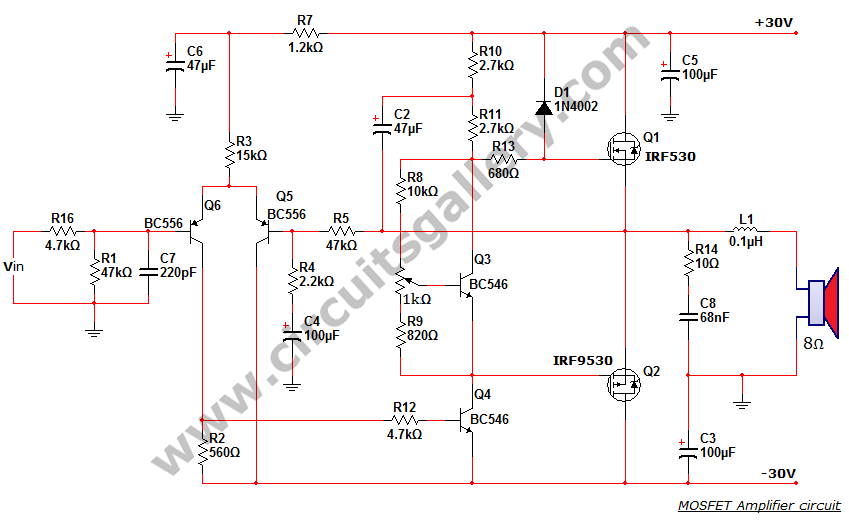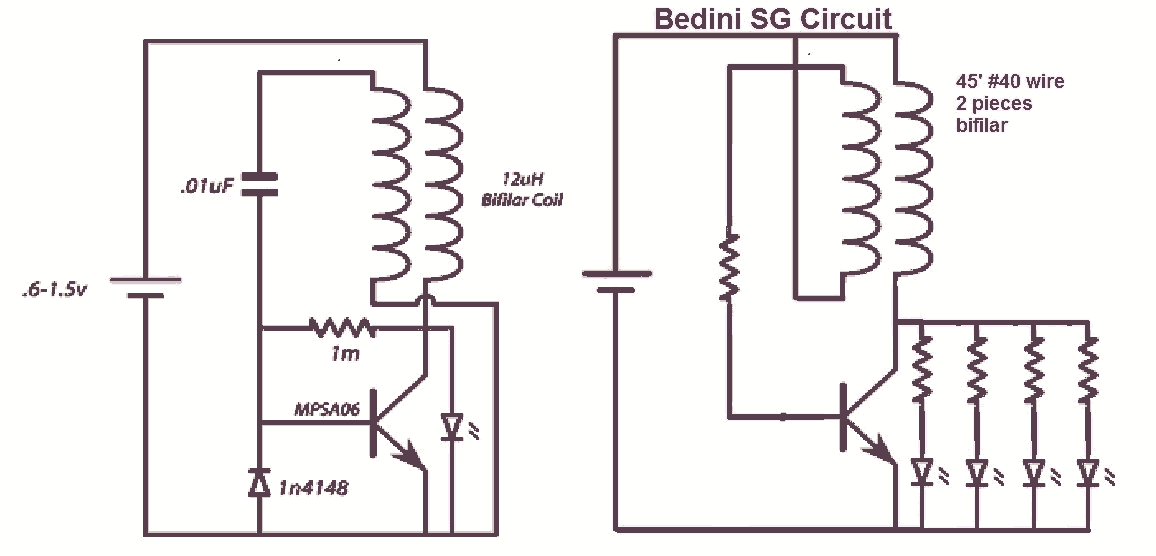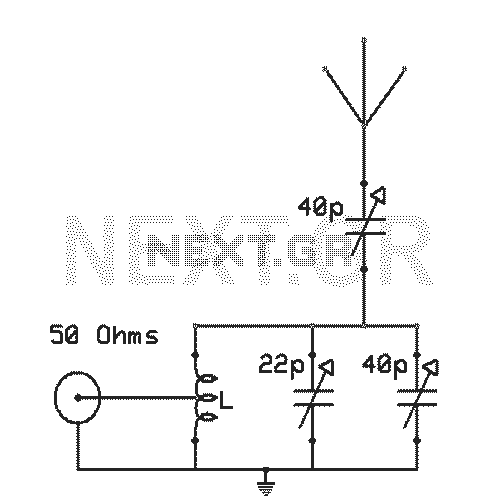
Noise generator circuit

This circuit generates a wide variety of noise types, including white noise, pink noise, high pass noise, grainy noise (with adjustable graininess), and adjustable random gates. It is designed for enthusiasts of noise generation. The noise source is derived from the reverse-biased emitter-base junction of Q1, which operates in avalanche mode due to exceeding the emitter-base breakdown voltage (BVEBO). The collector of Q1 is disconnected to prevent it from acting as an antenna that could pick up unwanted noise or electromagnetic interference (EMI). The positive supply voltage is applied to the emitter of Q1 through two series resistors, R33 and R2, each valued at 470K ohms. Capacitor C18 filters the voltage applied to the emitter to minimize supply ripple affecting the noise output. The base of Q1 is connected to the negative supply through a 10K resistor (R34), which enhances symmetry in the noise output. The noise generated at the emitter-base junction of Q1 is capacitively coupled to the non-inverting input of operational amplifier U1-A, which is biased to ground via a 2M resistor (R4). U1 adds a gain of 48, and its output is capacitively fed into an adjustable gain block, U1-B. Resistor R5 adjusts the noise level at the output of U1-B to approximately +/-5V peak-to-peak. The circuit can use various transistors, such as the 2N3904 or 2N5172, with the latter requiring attention to pinout differences. U2-A and its components form a high pass filter, contributing a hissing quality to the noise, while U2-B and its components create a low pass filter that produces a sound reminiscent of Niagara Falls. The plain white noise is output from U1-B and is directed to the inputs of window comparators U3-A/U3-B and single-sided comparator U4. The window comparator generates high pulses (approximately -12V to +12V) when the noise exceeds the high threshold and low pulses (approximately +12V to -12V) when the noise exceeds the low threshold. These pulses pass through diodes D1 and D2 and are attenuated by resistors R15 and R21, which function as a voltage divider for the grainy noise output. At the cathodes of D1 and D2, voltage spikes occur, transitioning from ground to -12V or from ground to +12V depending on which threshold is exceeded. A passive high pass filter (C15 and R23) is applied to the grainy noise output, producing the high pass grainy noise. The graininess adjustment modifies the window size for the window comparator; a wider setting results in fewer noise peaks exceeding the thresholds, while a narrower setting produces more frequent high and low pulses, creating an intensified noise effect. The noise fed into the single-sided comparator U4 is slightly filtered by a passive low pass filter (R26, C17, R27) and applied to its non-inverting input. The threshold for comparator U4 is adjusted using the gate frequency potentiometer (R28). When noise peaks surpass this threshold, U4's output transitions high (from approximately -12V to +12V). The positive excursions are routed through diode D3 and dropped across resistor R29, generating clock pulses for the CD4024 seven-stage binary counter. As the clock pulses do not occur at a regular frequency, the counter outputs change randomly.
The circuit's design emphasizes versatility in noise generation, making it suitable for various applications in sound synthesis, testing, and experimentation. The use of operational amplifiers ensures that the noise levels can be finely tuned, while the inclusion of filters allows for the shaping of the noise characteristics to meet specific requirements. The adjustable gain and graininess settings provide users with the ability to customize the noise output extensively, catering to both subtle and dramatic sound effects. This circuit is particularly beneficial for audio engineers and enthusiasts seeking to explore the boundaries of noise in creative and technical contexts.This circuit delivers a plentitude of noise, a veritable harvest of noise, yes, I dare say. an abundance of noise. Noise, noise and more noise. This circuit gives you white noise, pink-ish noise, high pass noise, grainy noise (with grainy adjust), and lastly adjustable random gates. Noise lovers take heart this board was made for you. In the Noise Cornucopia, the noise source is the reverse-biased emitter-base junction of Q1. We cut off the collector of Q1 so that it doesn`t act like an antenna picking up unwanted noise or EMI. The BVEBO (Emitter-Base Breakdown Voltage) is exceeeded thus the transistor is operating in avalanche mode.
More noise info can be found here: Random Electrical Noise: A Literature Survey - by Terry Ritter. The positive supply voltage is applied to the emitter of Q1 via R33 and R2, 470K resistors in series. Capacitor C18 filters the voltage applied to the emitter to reduce the possibility of supply ripple getting into the noise output.
Q1`s base is connected to the negative supply via R34, 10K resistor. This configuration results in more symmetry in the noise output. The noise generated at the EB junction of Q1 is capacitively coupled to the non-inverting input of U1-A which is biased to ground by R4 (2M) resistor. A gain of 48 is added by U1 and it`s output is fed capacitively to adjustable gain block U1-B. R5 is used to adjust the level of the noise at the output of U1-B to approximately +/-5V P-P. I found that just about any 2N3904 provided enough noise for this circuit but you may have to try a few to find the noisiest.
Try to find the one that needs the least gain out of the second gain block to give you the required +/-5V P-P. The 2N5172 is another good noise transistor choice but note the difference in the pinout if you use it.
U2-A and associated components comprise a high pass filter which gives the noise a very nice hissing quality. U2-B and associated components comprise a low pass filter which gives the noise a very nice Niagra Falls kind of sound.
The plain white noise is provided by the output of U1-B. The plain noise is applied to the inputs of window comparator U3-A/U3-B and associated components, and single sided comparator U4. The window comparator delivers high pulses (approx. -12V to +12V) when the noise exceeds the high window threshold voltage and low pulses (approx. +12V to -12V) when the noise exceeds the low window threshold voltage. The high and low pulses pass thru D1 and D2 respectively and are dropped across resistors R15 and R21 which act as a voltage divider to lower the level of the noise appearing on the Grainy Noise output.
At the cathodes of D1 and D2 spikes go from ground to -12 or ground to +12 depending on which side of the window is being exceeded. A passive high pass filter (C15 and R23) is applied to Grainy Noise and not too surprisingly results in the Hi-pass Grainy Noise output.
The Graininess adjust works by setting the size of the window for the window comparator. When wide (low setting), fewer noise peaks exceed the high and low voltage thresholds. As the window is narrowed more and more noise peaks exceed the high and low thresholds and thus more and more high and low pulses occur. This causes the noise to go from a few ticks to a full rainstorm/hailstorm/meteor shower. whatever. The noise applied to the single sided comparator U4 is slightly filtered by the passive low pass R26, C17, R27 and applied to the non-inverting input of U4.
The threshold for comparator U4 is set by the Gate Frequency pot R28. When noise peaks exceed the threshold set by R28 the output of U4 goes high (from approx. -12 to +12V). The positive excursions are fed through D3 and dropped on R29. These pulses provide a clock to the CD4024 7 stage binary counter. Since the clocks do not occur at a regular frequency the counter`s outputs change randomly. The mo 🔗 External reference
The circuit's design emphasizes versatility in noise generation, making it suitable for various applications in sound synthesis, testing, and experimentation. The use of operational amplifiers ensures that the noise levels can be finely tuned, while the inclusion of filters allows for the shaping of the noise characteristics to meet specific requirements. The adjustable gain and graininess settings provide users with the ability to customize the noise output extensively, catering to both subtle and dramatic sound effects. This circuit is particularly beneficial for audio engineers and enthusiasts seeking to explore the boundaries of noise in creative and technical contexts.This circuit delivers a plentitude of noise, a veritable harvest of noise, yes, I dare say. an abundance of noise. Noise, noise and more noise. This circuit gives you white noise, pink-ish noise, high pass noise, grainy noise (with grainy adjust), and lastly adjustable random gates. Noise lovers take heart this board was made for you. In the Noise Cornucopia, the noise source is the reverse-biased emitter-base junction of Q1. We cut off the collector of Q1 so that it doesn`t act like an antenna picking up unwanted noise or EMI. The BVEBO (Emitter-Base Breakdown Voltage) is exceeeded thus the transistor is operating in avalanche mode.
More noise info can be found here: Random Electrical Noise: A Literature Survey - by Terry Ritter. The positive supply voltage is applied to the emitter of Q1 via R33 and R2, 470K resistors in series. Capacitor C18 filters the voltage applied to the emitter to reduce the possibility of supply ripple getting into the noise output.
Q1`s base is connected to the negative supply via R34, 10K resistor. This configuration results in more symmetry in the noise output. The noise generated at the EB junction of Q1 is capacitively coupled to the non-inverting input of U1-A which is biased to ground by R4 (2M) resistor. A gain of 48 is added by U1 and it`s output is fed capacitively to adjustable gain block U1-B. R5 is used to adjust the level of the noise at the output of U1-B to approximately +/-5V P-P. I found that just about any 2N3904 provided enough noise for this circuit but you may have to try a few to find the noisiest.
Try to find the one that needs the least gain out of the second gain block to give you the required +/-5V P-P. The 2N5172 is another good noise transistor choice but note the difference in the pinout if you use it.
U2-A and associated components comprise a high pass filter which gives the noise a very nice hissing quality. U2-B and associated components comprise a low pass filter which gives the noise a very nice Niagra Falls kind of sound.
The plain white noise is provided by the output of U1-B. The plain noise is applied to the inputs of window comparator U3-A/U3-B and associated components, and single sided comparator U4. The window comparator delivers high pulses (approx. -12V to +12V) when the noise exceeds the high window threshold voltage and low pulses (approx. +12V to -12V) when the noise exceeds the low window threshold voltage. The high and low pulses pass thru D1 and D2 respectively and are dropped across resistors R15 and R21 which act as a voltage divider to lower the level of the noise appearing on the Grainy Noise output.
At the cathodes of D1 and D2 spikes go from ground to -12 or ground to +12 depending on which side of the window is being exceeded. A passive high pass filter (C15 and R23) is applied to Grainy Noise and not too surprisingly results in the Hi-pass Grainy Noise output.
The Graininess adjust works by setting the size of the window for the window comparator. When wide (low setting), fewer noise peaks exceed the high and low voltage thresholds. As the window is narrowed more and more noise peaks exceed the high and low thresholds and thus more and more high and low pulses occur. This causes the noise to go from a few ticks to a full rainstorm/hailstorm/meteor shower. whatever. The noise applied to the single sided comparator U4 is slightly filtered by the passive low pass R26, C17, R27 and applied to the non-inverting input of U4.
The threshold for comparator U4 is set by the Gate Frequency pot R28. When noise peaks exceed the threshold set by R28 the output of U4 goes high (from approx. -12 to +12V). The positive excursions are fed through D3 and dropped on R29. These pulses provide a clock to the CD4024 7 stage binary counter. Since the clocks do not occur at a regular frequency the counter`s outputs change randomly. The mo 🔗 External reference




